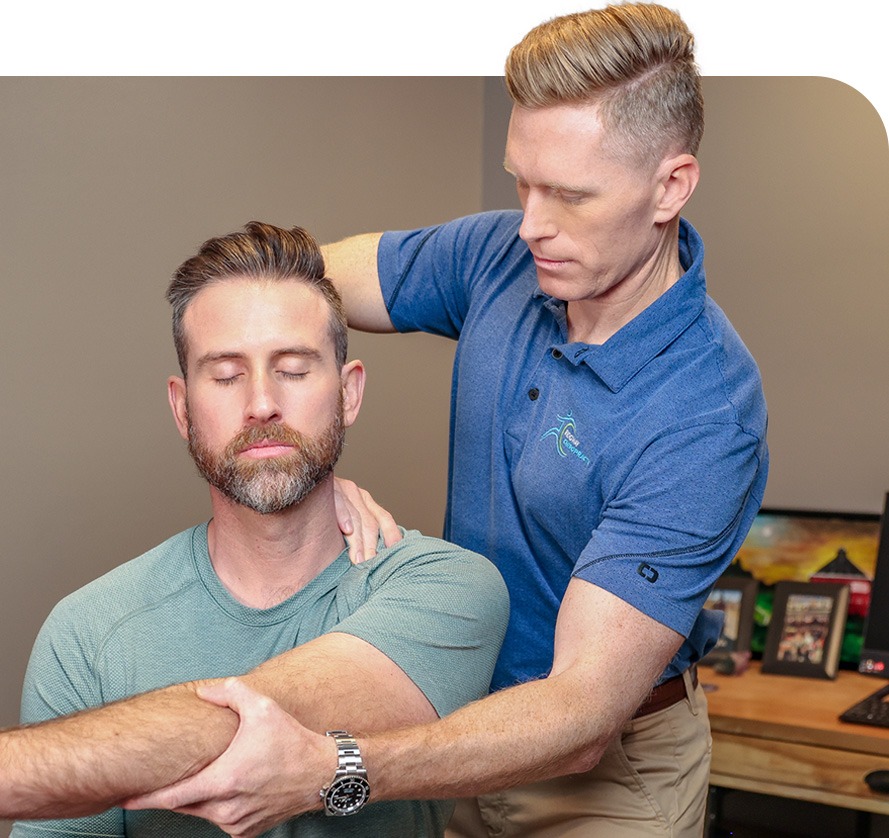There is nothing more frustrating than being kept from training or competing due to an injury. Unfortunately for runners, this realization is particularly common as running injuries are some of the most common in sports. Plantar fasciitis, shin splints, IT band syndrome, piriformis syndrome, low back pain, etc. are all injuries that many of us have had to deal with at one time or another. Not only are these injuries common, but they can be debilitating, recurrent, and often very slow to respond to traditional treatment. And often times, significant rest does nothing to solve the problem and a runner experiences the same complaint that sidelined them when they return after a several week or even several month layoff. Many fail to understand why significant rest does nothing to solve the problem.

The typical runner will take somewhere in the neighborhood of 800-1000 strides per mile. So to put this in perspective, if you were to go on a nice two-mile jog, each heel would strike the ground approximately 2000 times. A five-mile run would result in each heel striking the ground approximately 5000 times and a ten-mile run would result in each heel striking the ground approximately 10,000 times. Not only is this a tremendous amount of repetitions, but the amount of force generated from each heel strike is equally astounding. Studies vary, but on average, a heel striker will generate a force 2-3 times their bodyweight per heel strike. So let’s take a 150lb individual. Each heel strike then generates between 300lbs and 450lbs of pressure. Multiply that by the 2000 heel strikes from a 2-mile jog or the 10,000 strikes from a 10-mile run and I think you guys see the point. Running results in a tremendous amount of cumulative micro-trauma that is translated from the foot to the ankle to the knee to the hip to the back, etc.
Now, the body is designed to handle these stresses, albeit there must be sufficient strength, endurance, mobility, and muscle balance to absorb and translate the forces in the appropriate manner. An imbalance here or a weakness there results in inappropriate stresses on joints and tissue that are not designed or intended to take those stresses. This is why running injuries are so prevalent. A minor problem can cause a whole host of problems when the repetition is high and the forces are great.
When we talk about running, it is important to remember that the foot, ankle, knee, hip, back, etc. are all connected and the proper function of each is necessary to achieve optimal performance and injury prevention. One dysfunctional muscle can cause a problem not only in the affected area, but anywhere in the entire kinetic chain, resulting in compensation and inefficient movement.
In running, we call this “stride compensation.” As the body compensates for problematic areas, forces are translated to areas not designed or accustomed to take the increased stresses causing minor problems to be amplified over the course of a series of repetitions. In this case, a minor issue can become a very painful, chronic issue.
So what causes these minor issues? What causes muscle tightness, weakness? And how does cumulative trauma culminate into a serious and chronic injury?
Let’s talk about micro trauma. As runners subject themselves to continuous and repetitive forces, micro trauma develops. The body then lays down scar tissue to repair the damaged area. This is a normal process and is not a problem. However, as runners continue to train, the amount of scar tissue compounds as the same muscles are strained and repaired over and over again. Scar tissue begins to build up resulting in scar tissue adhesions.
Normal muscle consists of hundreds to thousands of parallel fibers running in a specific direction. As the body repairs micro trauma, it lays down new tissue with little attention paid to the parallel nature of the surrounding musculature. The result is a thick, stiff, matted, and non-contractile matrix within the muscle tissue.
The result is a shortened muscle that is unable to effectively and efficiently contract. The shortened muscle now requires more power output to move, increasing energy expenditure, leading to premature fatigue, and causing the recruitment of other muscles to compensate. The repetitive injury cycle has been initiated.
As this cycle repeats itself, the integrity of the muscles involved continue to be compromised. Eventually, the muscle gives way and a more serious injury is the result.
Many runners have difficulty explaining how the injury occurred, as they did nothing differently in training. When questioned more, most runners describe a slight pain or experience some muscle tightness that has been building up over time. The “injury” that brought them in the front door was merely the match in the powder barrel.
So, now that we have established how and why running injuries occur, the best approach to treatment will make total sense. Read about running injury treatment in the upcoming blog post, “The Best Approach to Effectively Treat Running Injuries.”
-Dr. Caleb Ridgway DC, ART

